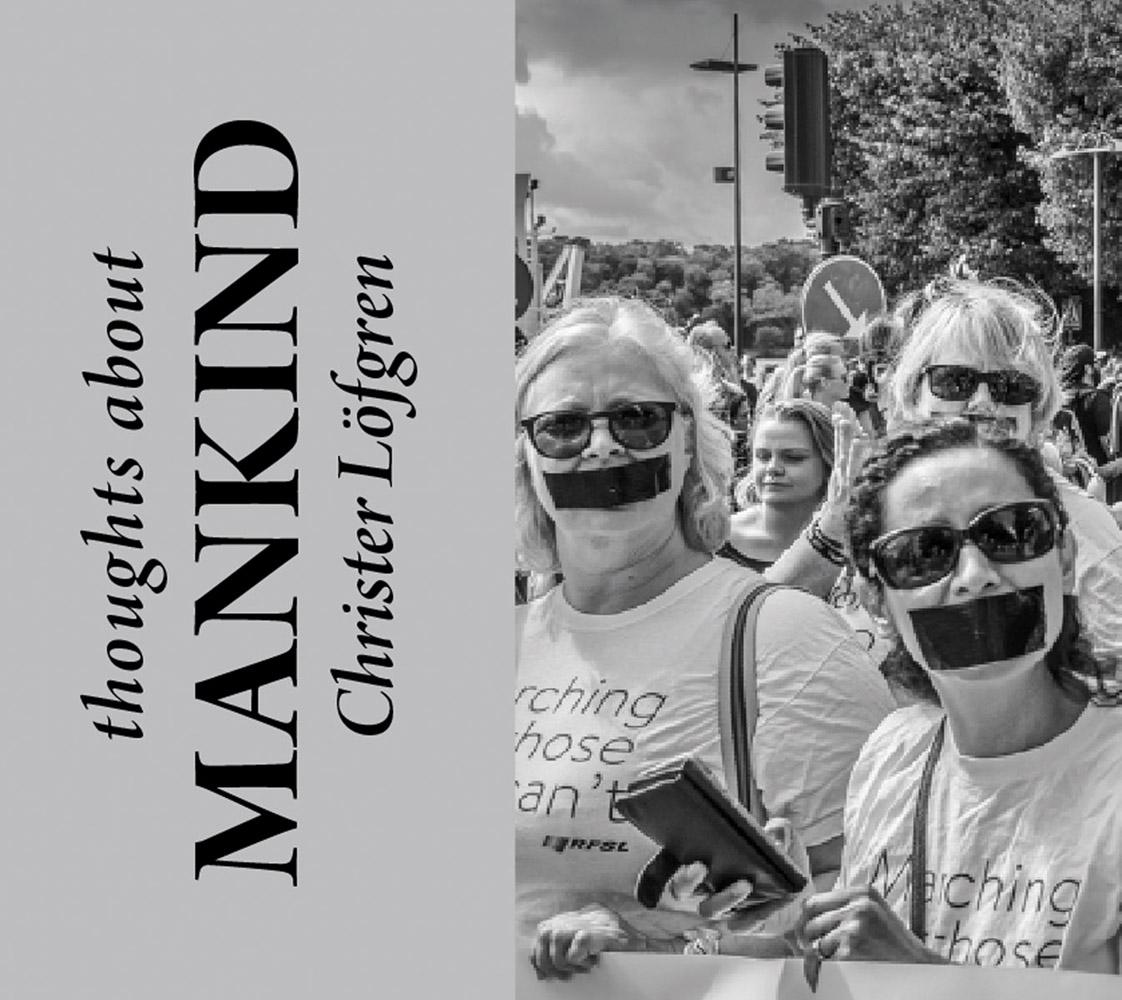

MAN – thoughts about mankind Nr 1
Documentary photography, buried last century, the credibility vanished with the exploration of the software Photoshop. The notion of manipulated photos made it impossible to judge it’s authenticity. Never the less, documentary photography has not drowned in the world of photo manipulation, and there is still an interest in documentation and ”straight photography.” In this set of books, Christer Löfgren explores, with a new approach, the emotions of humankind. His excellent and aggressive uncensored pictures revile the pure expression of humanity.
Humankind, and the camera
The most significant paradigm in the art of photography is the shift from analog to digital. Young generations today have lost the fascinating process of the film, water, chemicals, and paper. They have lost the magic that appears in front of your eyes when you put the exposed paper into the developer. Within ten seconds, the picture slowly begins to appear, and if you have made the right exposure, it is fully developed within two minutes. How the film is exposed is still a mystery; the physical and chemical reaction has still not been revealed. Compared with sketches and paintings, pictures were created untouched by any hands and “drawn with light.” The handicraft of photography started with imitating the theories of old-school paintings. With its short history of almost two hundred years, it has had a remarkable development. The first news photograph, which was made in France 1847 and published in the Journées illustrées de la révolution de 1848, is considered the first image used to illustrate a news story and the first example of photojournalism. A few years later in 1855, Roger Fenton, along with his assistants and equipment, was engaged in the Crimea War as an official campaign photographer paid for by the British government. This was the first historical attempt to portray a war campaign. Due to the limitations of the photographic techniques of the period, it was hard to capture the devastation of the war. But still, the realism of Fenton’s photos surpassed text descriptions, drawings or paintings as journalistic evidence. The cumbersome equipment Fenton carried with him in his van, his mobile darkroom, were 700 glass plates, five large format cameras and cases of photographic equipment and supplies.
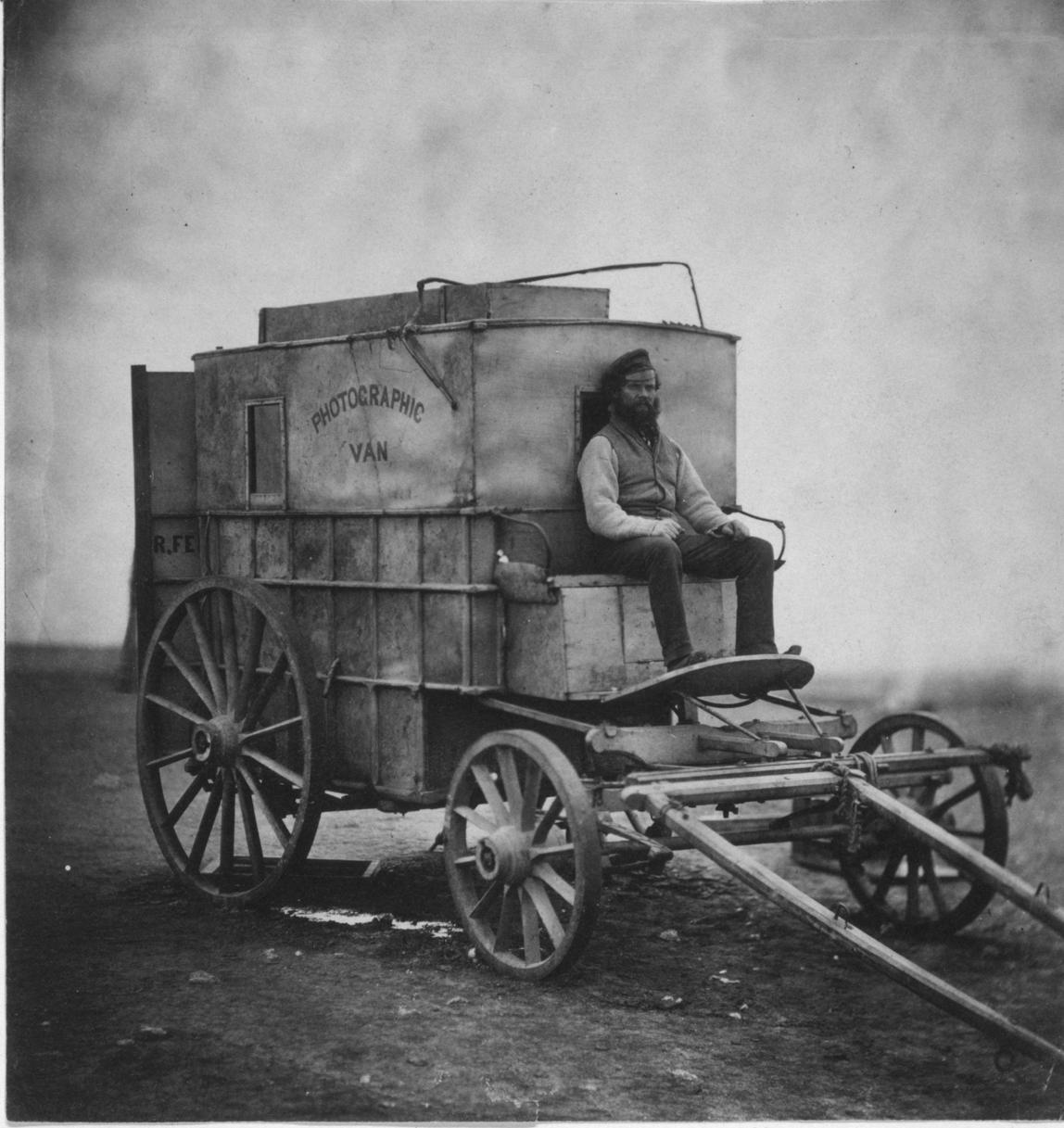
Photographic processes at the time were elaborate and cumbersome. With the invention of the photographic process, the documentary genre was born. The next camera evolution, from Fenton’s heavy to the first roll film camera, resulted in the birth of the amateur photographer. In 1881, farmer Peter Houston from Wisconsin, U.S.A invented the roll film camera. In close collaboration with George Eastman, Peter’s brother David created the roll film holder used in the Kodak No. 1 box camera (1888), the first easy-to-use camera. “You press the button; we do the rest” was their motto.
In the early twentieth century, the Pictorialist movement in photography was still dominant. The beginning of “straight photography” was emerging. Through politically motivated
Marcus Sparling seated on Fenton’s photographic van, Crimea, 1855.
pictures, Lewis Hine used his camera as a tool for social reform and was funded by the government. Documentary photography usually covers a theme or topic and is published in an essay or reportage to politically emphasize the content. The ease of roll film cameras made thousands of artists and amateurs guilty of appearing in photos. Arnold Genthe, who was born in Berlin 1869 and moved to Califonia in 1894, is considered one of the first in the genre “street photography.” With his small handheld camera and no experience in photography, he photographed the inhabitants of San Francisco’s Chinatown.
Pictures of Old Chinatown (1908) is the first publication of his wandering the streets of Chinatown with a hidden camera.
In Europe’s late 19th and early 20th centuries, Paul Martin turned the lens to everyday life to produce “snapshots.” He used a fixed-focus detective camera camouflaged to look like a brown paper parcel he carried under one arm. He wrote, “it is impossible to describe the trill which taking the first snap without being noticed gave one.” At the time, these kinds of mundane images were considered “beneath dignity” or shocking. The outbreak of easy handheld cameras made it possible to take “straight photography,” which later became a movement popularized by Alfred Stieglitz and Paul Strand. In the 1930s, the West Coast Photographic Movement, with its hyper-realistic images, adopted Edvard Weston, Ansel Adams, and their friends and colleagues, members of Group f/64, who went on to dominate modernist photographic aesthetics into the 1970s.
Documentaries and street photography have similarities but manifest differences in motivation and style: a documentary is
journalistic and street photography is candid. Henri CartierBresson was responsible for the term “decisive moment.”
As a 20th-century photographer associated with the postwar humanist school, he focused on form, content, vision, and composition, which inspired successive generations of photographers.
Swiss-American photographer Robert Frank published his book The Americans in 1958, through the French publisher Robert Delpire in Paris. Robert Frank was inspired by Walker Evans’s work, in 1938-41, with a 35mm Contax camera hidden beneath his coat, a photo series of images from New York Subway. Evans’s book Many Are Called was not published until 1966. Frank traveled across the United States in 1955-57, after receiving a Guggenheim Fellowship, to photograph its society. It took two years, and 83 images were printed in his book. It is perhaps the most influential photography book of the 20th century. It received substantial criticism when it was finally published in the United States in 1959. This edition was published without the introducing text of Jack Kerouac, an iconoclast of the Beat Generation. “Meaningless blur, grain, muddy exposures, drunken horizons and general sloppiness.” cited from Popular Photography. Frank moved away from photography to concentrate on filmmaking, but in 1972, he published his second book The Lines of My Hand, a “visual autobiography” consisting of personal photographs. He had given up “straight” photography and, instead, created collages and constructed pictures. The influence of Robert Frank and Henri Cartier-Bresson is immense. Inspired by Frank in the 1960s, Garry Winogrand, Lee Friedlander, and Joel Meyerowitz began
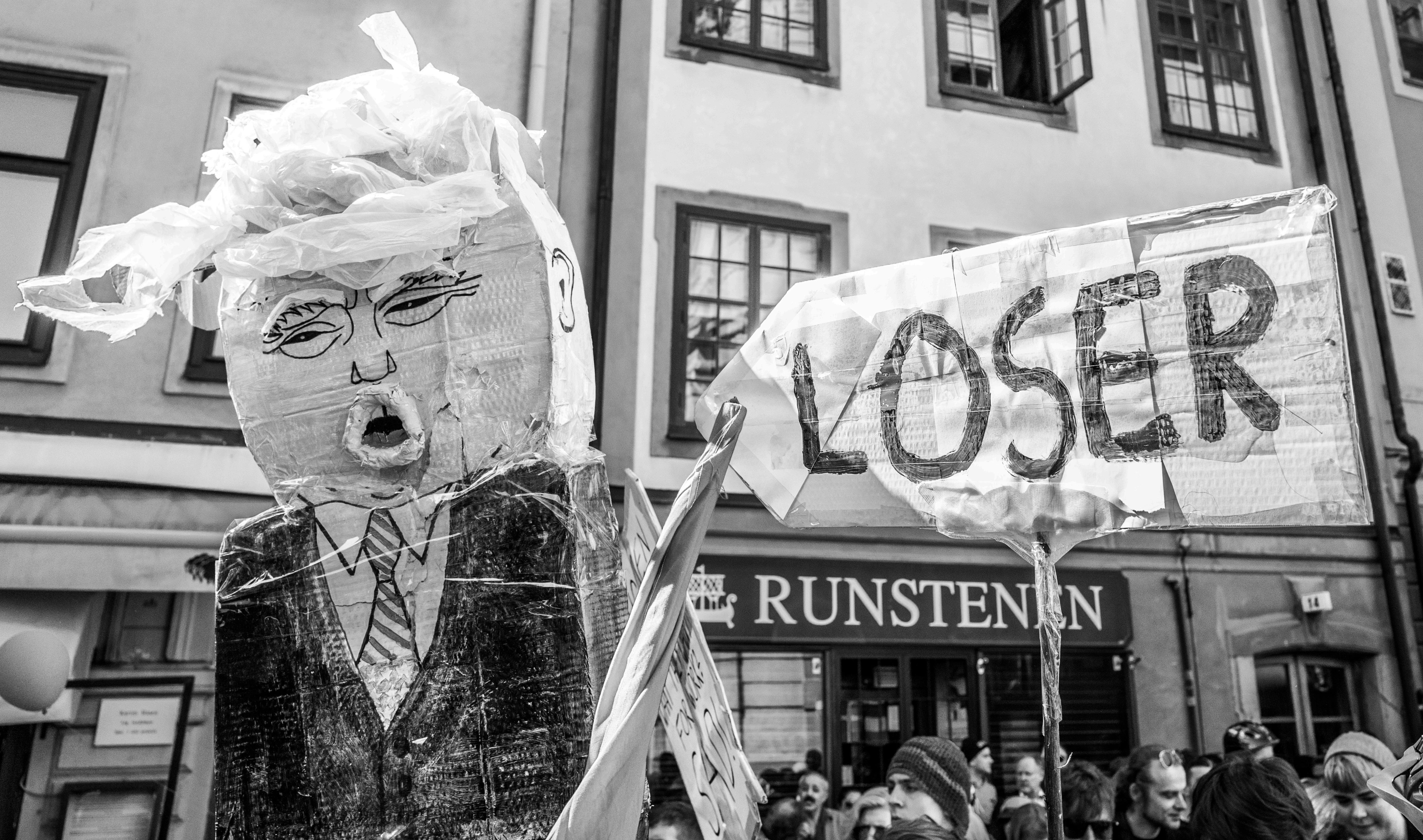

…and cry out loudly
MAN – thoughts about mankind Nr 2
Self-portraits were part of the artist’s perception and artistic development. A perfect self-portrait could procure fame, as a painter, sculpturer or photographer. The first self-portrait in photography was a daguerreotype from 1839 by Robert Cornelius. Today, in the twenty-first century, with the explosion of the information society and where the digital camera has become an everyday commodity. The smartphone, combined with Instagram and Facebook, have created a blast of ”Selfies” that nobody can avoid. Even politicians use a selfie to promote them self. In this second section of MAN, we find the interaction between two persons.
…and bored.
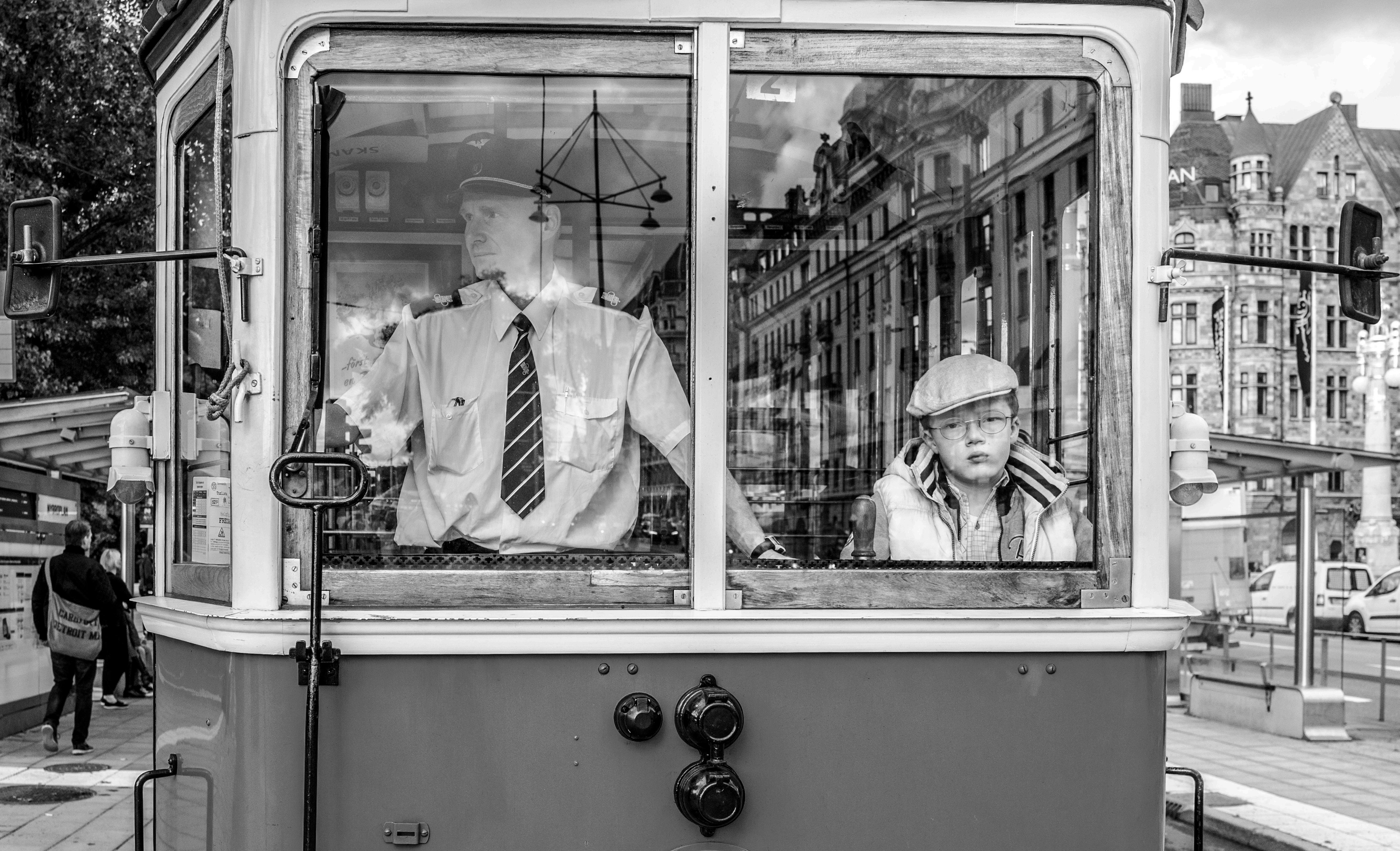

MAN – thoughts about mankind Nr 3
”two is a company, and three is a crowd.’” Oxford Dictionary of Word Origins claims that the original proverb is from the 1730s. There is nothing new with a crowd, and it has always been politicised and compromised. Even the police are using body-cameras to document others beastly action and sometimes there own. A group of people can be a haven or a nightmare. It seems that the nature of human beings changes character when entering a group, history has shown. Photographer has documented violent demonstrations, and many paid with there lives, especially in the war-zone. In this third section, we encounter humankind interacting in a groups.
One wonders
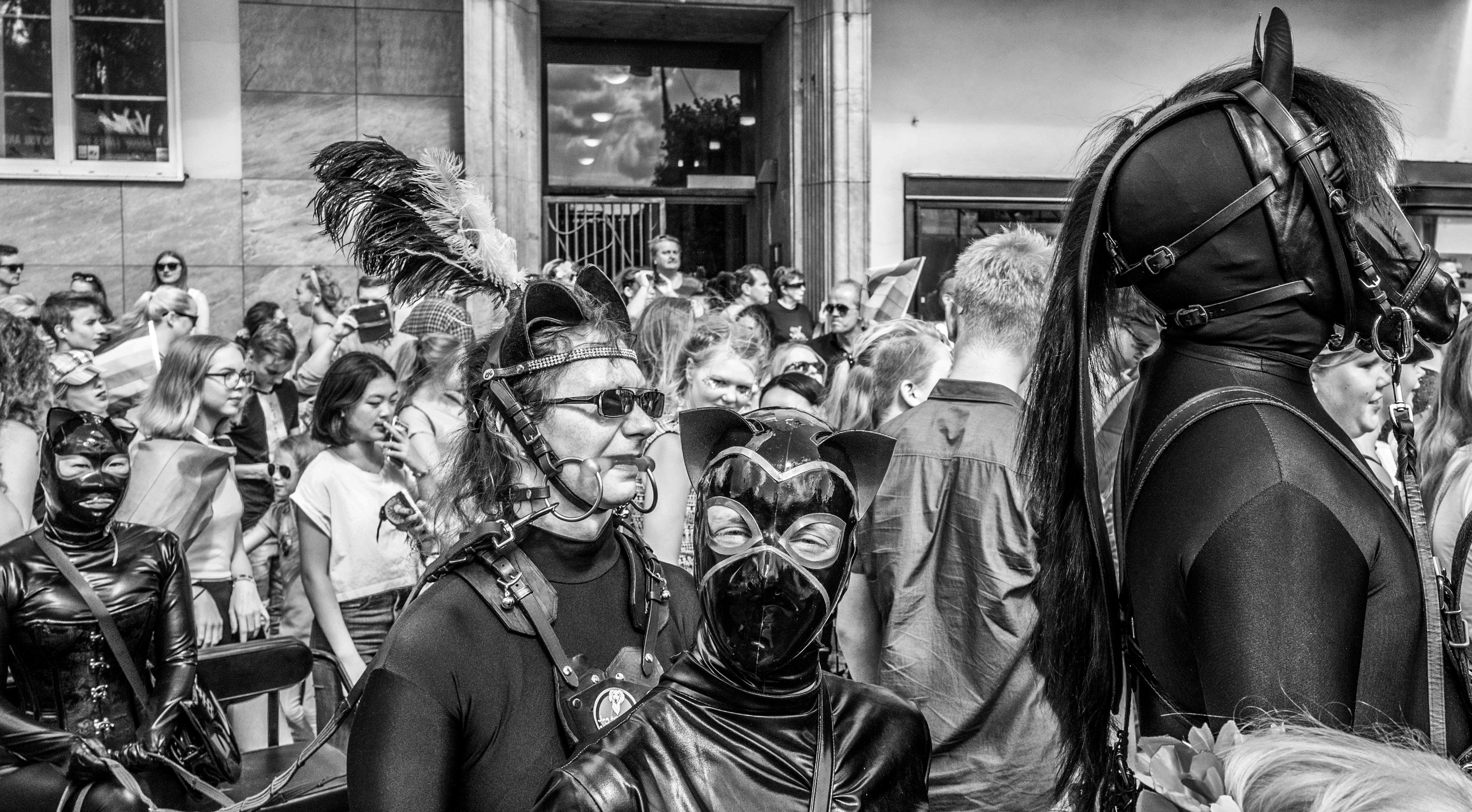

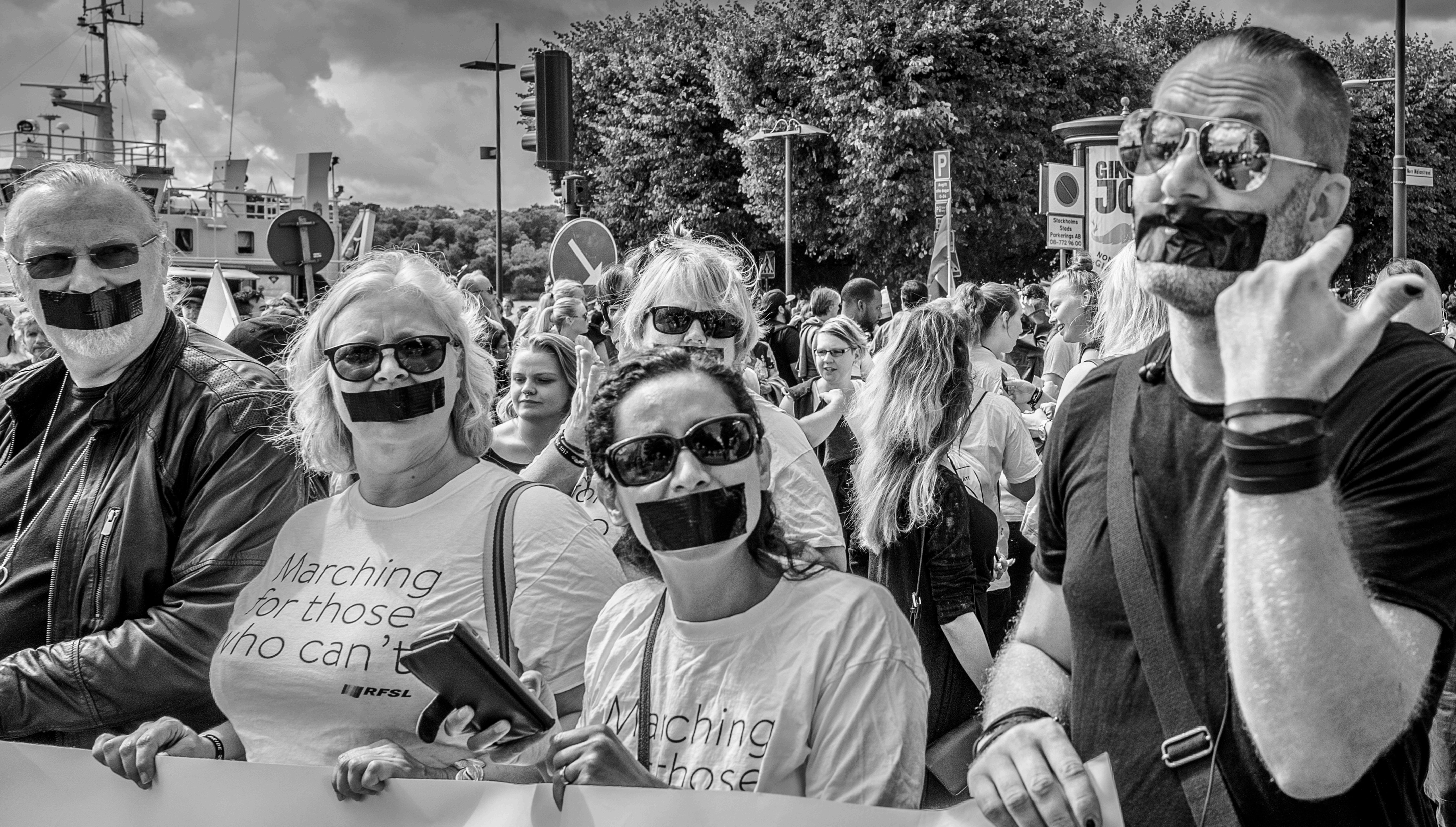

Man are muted
